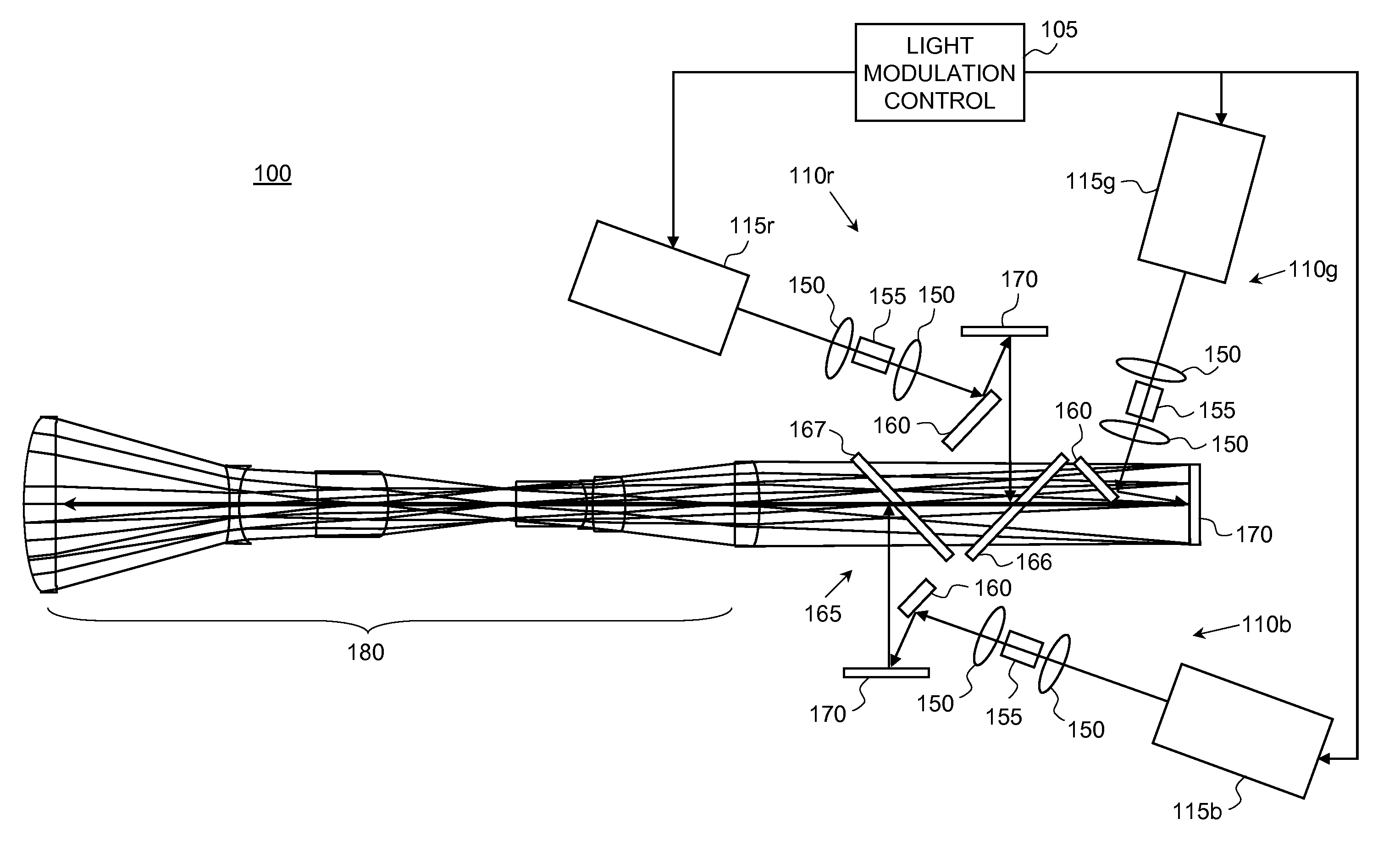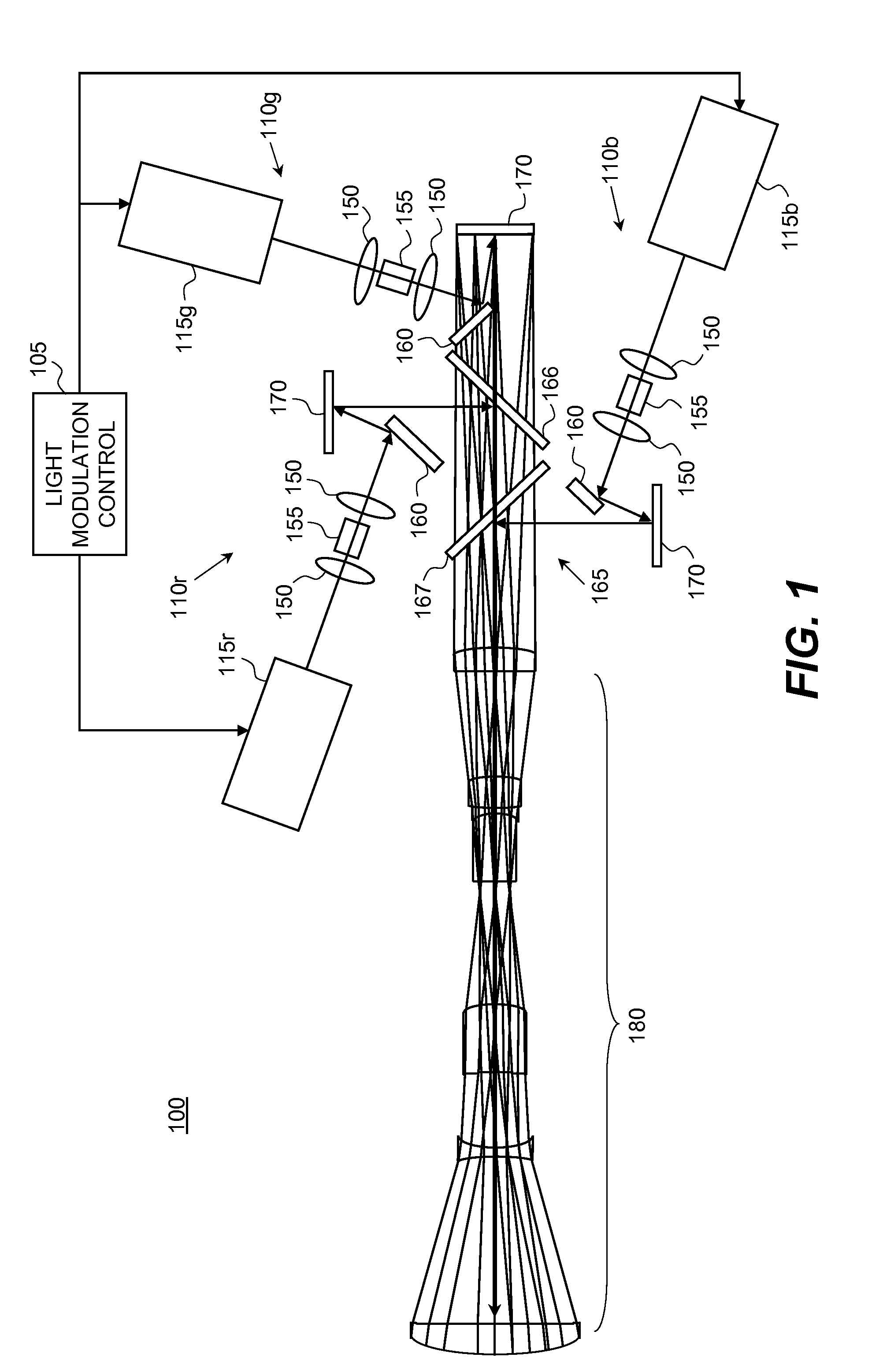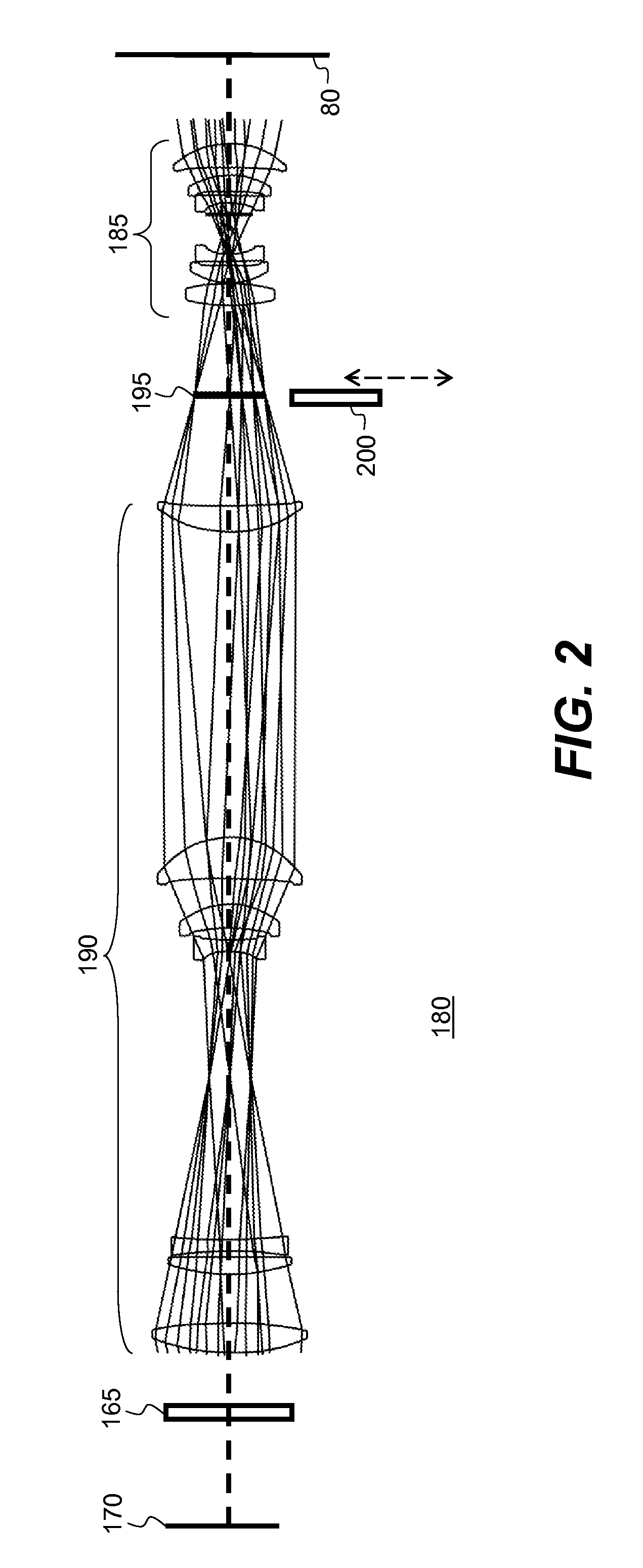Light source modulation for projection
a light source and projection technology, applied in the field of optical projection systems, can solve the problems of uncommercialized approaches using single laser devices per color, unsatisfactory laser based projection systems, and inability to achieve commercialization, so as to reduce light intensity fluctuations and reduce image artifacts
- Summary
- Abstract
- Description
- Claims
- Application Information
AI Technical Summary
Benefits of technology
Problems solved by technology
Method used
Image
Examples
Embodiment Construction
[0037]In order to better understand the present invention, it is instructive to describe the overall context within which apparatus and methods of the present invention can be operable. The schematic diagram of FIG. 1 shows a basic arrangement for projector 100 that is used in a number of embodiments of the present invention. The projector 100 includes an illumination subsystem having three illumination assemblies 110r, 110g, and 110b, each providing one of the primary Red, Green, or Blue (RGB) colors using a corresponding light source assembly 115r, 115g and 115b. Each of the light source assemblies 115r, 115g and 115b comprise a plurality of light sources (not shown), which in a preferred embodiment, are laser light sources. Each light source assembly 115r, 115g and 115b also includes an optical combiner (not shown) to direct light from the multiple light sources to make an effective single light source.
[0038]Each illumination assembly 110r, 110g, and 110b typically includes one o...
PUM
 Login to View More
Login to View More Abstract
Description
Claims
Application Information
 Login to View More
Login to View More - R&D
- Intellectual Property
- Life Sciences
- Materials
- Tech Scout
- Unparalleled Data Quality
- Higher Quality Content
- 60% Fewer Hallucinations
Browse by: Latest US Patents, China's latest patents, Technical Efficacy Thesaurus, Application Domain, Technology Topic, Popular Technical Reports.
© 2025 PatSnap. All rights reserved.Legal|Privacy policy|Modern Slavery Act Transparency Statement|Sitemap|About US| Contact US: help@patsnap.com



